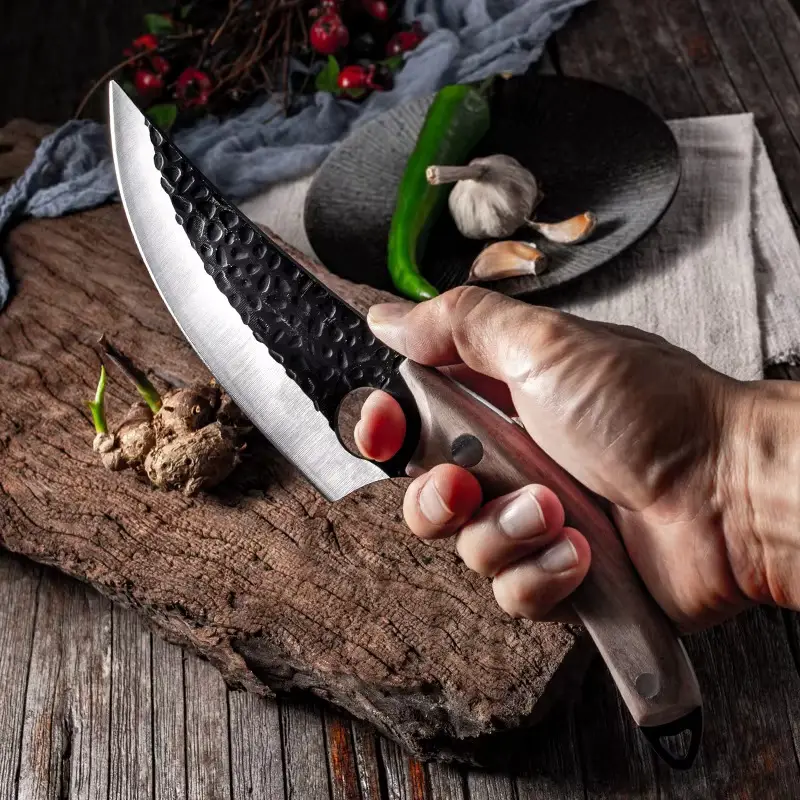There’s something truly magical about a well-made Vegetable Pad Thai that captivates both the taste buds and the senses. As someone who has always had an affinity for Thai cuisine, I must say that this particular recipe holds a special place in my heart. Whether it’s the harmonious blend of sweet, savory, and tangy flavors or the delightful crunch of fresh vegetables, this dish never fails to impress. I’ve prepared it countless times for family gatherings, and each time, it has been met with rave reviews. The vibrant colors and enticing aromas often draw everyone to the kitchen, eager to taste the latest creation. Even the pickiest of eaters in my family have found themselves reaching for seconds, a testament to the universal appeal of this classic dish.
Ingredients
To create this culinary delight, you’ll need a variety of fresh ingredients that come together to form a symphony of flavors. Here’s what you’ll need:
- 8 oz rice noodles
- 2 tbsp vegetable oil
- 3 cloves garlic, minced
- 1 cup tofu, cubed
- 1 red bell pepper, sliced
- 1 cup bean sprouts
- 2 green onions, chopped
- 1/4 cup roasted peanuts, chopped
- 2 tbsp soy sauce
- 2 tbsp tamarind paste
- 1 tbsp brown sugar
- 1 lime, juiced
- Fresh cilantro and lime wedges, for garnish
These ingredients are not only easy to find at your local grocery store but also offer the flexibility to be adjusted based on personal preferences and dietary needs. For those looking to add a bit of heat, including a chopped chili or a dash of chili flakes can elevate the dish to new heights. The combination of these ingredients ensures that each bite is packed with flavor and nutrition.
Instructions
Creating the perfect Vegetable Pad Thai is an art, but with these straightforward instructions, anyone can master it:
- Begin by soaking the rice noodles in warm water for about 20 minutes or until they are soft. Drain and set aside.
- Heat the vegetable oil in a large skillet or wok over medium heat. Add the minced garlic and sauté until fragrant, being careful not to burn it.
- Add the cubed tofu to the skillet and cook until golden brown on all sides. This should take about 5-7 minutes.
- Incorporate the sliced red bell pepper into the mix and sauté for another 3-4 minutes until it softens.
- Add the drained rice noodles, bean sprouts, and chopped green onions to the skillet. Toss everything together gently.
- In a small bowl, whisk together the soy sauce, tamarind paste, brown sugar, and lime juice. Pour this sauce over the noodle mixture and toss to coat evenly.
- Continue to cook for another 2-3 minutes, allowing the flavors to meld together.
- Serve the Vegetable Pad Thai hot, garnished with roasted peanuts, fresh cilantro, and lime wedges for an added burst of flavor.
The process might seem intricate, but it’s the attention to detail that makes this dish stand out. The key is to maintain a balance between the various elements, ensuring that no single ingredient overpowers the others. This approach results in a dish that is as enjoyable to make as it is to eat.
Nutrition Facts
Understanding the nutritional value of what we eat is crucial, and this Vegetable Pad Thai is both a delicious and nutritious option. This recipe yields approximately 4 servings, with each serving containing around 350 calories. The dish is rich in proteins from the tofu, vitamins from the fresh vegetables, and healthy fats from the peanuts, making it a well-rounded meal that’s perfect for lunch or dinner.
Preparation Time
One of the many appeals of Vegetable Pad Thai is its relatively quick preparation time. From start to finish, you can expect to spend about 40 minutes making this dish. This includes the time needed to soak the noodles and prepare the vegetables. The cooking process itself is swift, especially if you have your ingredients prepped and ready, allowing you to enjoy a homemade meal without spending hours in the kitchen.
How to Serve
Serving Vegetable Pad Thai can be a delightful experience, combining both presentation and flavor to create an unforgettable meal. Here are some detailed suggestions to enhance your serving technique and elevate the overall dining experience:
Plating
To truly showcase this vibrant dish, choose a wide, shallow plate that allows for the colors and textures of the ingredients to shine. A white or light-colored plate can create a striking contrast against the colorful components of the Pad Thai, such as the bright vegetables and the rich, golden noodles. When plating, use a fork or tongs to twirl the noodles into a nest-like formation, creating height and dimension. This not only makes the dish visually appealing but also makes it easier for guests to serve themselves.
Garnishes
Garnishes play a crucial role in enhancing both the presentation and flavor profile of Vegetable Pad Thai. Consider adding a generous sprinkle of chopped roasted peanuts, which not only provide a delightful crunch but also a nutty flavor that complements the dish beautifully. Fresh cilantro adds a burst of color and a refreshing aromatic element—scatter it artfully over the noodles right before serving. Lime wedges should be placed strategically on the side of the plate, inviting guests to squeeze fresh lime juice over their dish just before digging in, enhancing the overall flavor and adding a zesty brightness.
Accompaniments
Pairing your Vegetable Pad Thai with the right accompaniments can elevate the meal and create a more balanced dining experience. A simple cucumber salad, dressed lightly with rice vinegar, sugar, and a touch of salt, can provide a refreshing contrast to the rich flavors of the Pad Thai. Alternatively, consider serving a light Thai soup, such as Tom Yum, which offers a fragrant, spicy kick that complements the noodles without overpowering them. These side dishes not only add variety but also round out the meal, ensuring that your guests leave satisfied.
Beverages
The right beverage can significantly enhance the overall dining experience. For a traditional touch, serve your Vegetable Pad Thai with Thai iced tea, which offers a sweet, creamy contrast to the savory flavors of the dish. Alternatively, a chilled white wine, such as a Sauvignon Blanc or a dry Riesling, can provide a crisp and refreshing accompaniment. If you prefer non-alcoholic options, consider offering coconut water or a citrus-infused sparkling water to cleanse the palate between bites.
Family Style
For a more communal and interactive dining experience, consider presenting the Vegetable Pad Thai in a large serving bowl at the center of the table. This family-style approach encourages sharing and allows guests to customize their servings according to their preferences. Provide serving utensils, and let everyone help themselves, fostering a relaxed and engaging atmosphere. This method not only makes the meal feel more inclusive but also encourages conversation and connection among diners.
Personalization and Creativity
These serving suggestions not only enhance the dining experience but also allow for personalization, making each meal memorable and enjoyable. Encourage guests to mix and match garnishes or modify their portions based on their taste preferences. By creating an inviting and interactive dining environment, you can make your Vegetable Pad Thai not just a meal, but a shared experience that brings people together around the table. Whether for a casual weeknight dinner or a festive gathering, these thoughtful serving techniques will ensure that your Vegetable Pad Thai is not only delicious but also visually captivating and enjoyable for all.
Additional Tips
For those looking to refine their Vegetable Pad Thai, here are some additional tips to consider that will not only enhance the flavors but also elevate the overall dining experience:
1. Use Fresh Ingredients
Fresh ingredients are the cornerstone of any great dish, and Pad Thai is no exception. When selecting vegetables, opt for a variety of colors and textures to create a visually appealing dish that is also rich in nutrients. Fresh bell peppers, crunchy bean sprouts, vibrant green scallions, and crisp carrots not only add flavor but also provide a satisfying crunch.
- Seasonal Produce: Always choose seasonal produce when possible, as it tends to be more flavorful and economical. For example, spring brings tender asparagus and snap peas, while summer offers juicy zucchini and ripe tomatoes. Each season brings a unique array of vegetables that can transform your Pad Thai.
- Herbs and Aromatics: Incorporating fresh herbs such as cilantro and Thai basil can introduce aromatic qualities that significantly enhance the dish. Consider using a mix of herbs to create depth—add mint or even lemongrass for a refreshing twist. These herbs can be added at the end of cooking or used as a garnish to preserve their vibrant flavor.
2. Adjust the Spice Level
Pad Thai can be tailored to suit any palate, and adjusting the spice level is a great way to make the dish your own. Start with a small amount of chili flakes or fresh chili peppers, tasting as you go to ensure you achieve your desired heat.
- Balancing Heat: If you prefer a milder flavor, consider adding a touch of sugar to balance the heat. Conversely, for those who enjoy a spicy kick, you can incorporate Thai bird’s eye chilies or even a splash of sriracha or chili paste.
- Flavor Integration: Remember, the goal is to complement the other flavors in the dish rather than overpower them. A good approach is to introduce the spice gradually; you can always add more, but it’s tough to tone down an overly spicy dish.
3. Balance the Sauce
The sauce is arguably the heart of Pad Thai, and achieving the perfect balance of sweet, salty, and tangy is crucial. A traditional Pad Thai sauce typically consists of tamarind paste, fish sauce, and sugar, but you can modify this to suit your taste.
- Tasting and Adjusting: Before adding the sauce to the noodles, taste it to ensure it has the right flavor profile. If it feels too salty, add a bit more sugar; if it’s too sweet, a splash of lime juice can help brighten it up.
- Custom Sauces: Don’t hesitate to experiment with other ingredients—adding a splash of soy sauce for umami, or a hint of vinegar for acidity can enhance the complexity of the sauce. Consider blending the sauce in a small bowl first, allowing for more precise adjustments before mixing it with the noodles.
4. Don’t Overcook the Noodles
Achieving the perfect noodle texture is essential for a great Pad Thai. Overcooked noodles can become mushy and lose their appealing chewiness.
- Cooking Tips: Follow the package instructions carefully, but start checking for doneness a minute or two early. Ideally, the noodles should be al dente, meaning they still have a slight bite to them. After draining, you can toss them with a few drops of oil to prevent sticking.
- Rinsing Technique: If you’re not using them immediately, rinse them under cold water to halt the cooking process. This not only stops the cooking but also helps remove excess starch that could make them gummy.
FAQ Section
Here are some frequently asked questions about Vegetable Pad Thai:
Q: Can I make this dish ahead of time?
A: Yes, you can prepare the components separately and combine them just before serving to maintain freshness and texture.
Q: Is there a vegan version of this recipe?
A: Absolutely! Simply ensure all ingredients, such as soy sauce and tamarind paste, are vegan-friendly. You can also replace tofu with tempeh for a different texture.
Q: Can I freeze leftover Pad Thai?
A: While it’s best enjoyed fresh, you can freeze leftovers in an airtight container. Reheat gently on the stovetop, adding a splash of water to regain the sauce’s consistency.
Q: What if I can’t find tamarind paste?
A: If tamarind paste is unavailable, you can substitute it with a mixture of lime juice and brown sugar, though the flavor will be slightly different.
Q: How can I make this dish gluten-free?
A: Ensure that the soy sauce is gluten-free, or use tamari as a substitute. Also, double-check that all packaged ingredients are certified gluten-free.
These questions and answers should help address any concerns or modifications you might consider when preparing this delightful dish, ensuring that your Vegetable Pad Thai experience is as seamless and enjoyable as possible.






